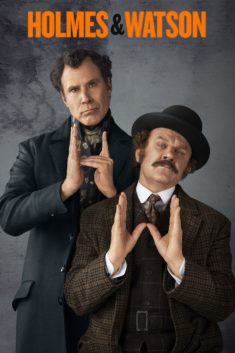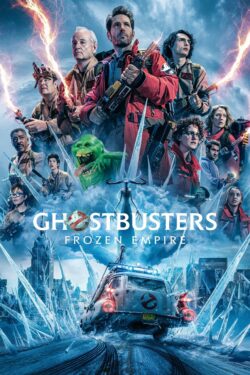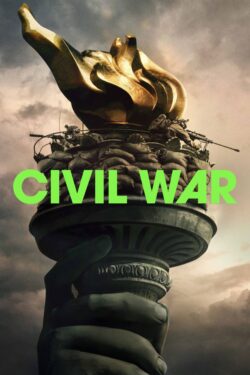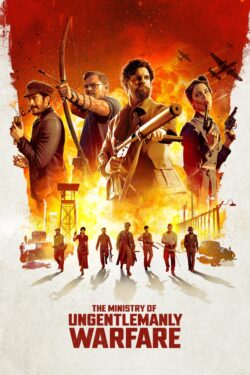Holmes and Watson (2018)
Animal Action

All horseback riders were stunt riders or experienced actors who were skilled at riding, mounting and dismounting. All running/galloping scenes were well choreographed, and actors used caution while on and near animals. The horse(s) rearing was a trained behavior. When teams of horses pulled wagons or carriages, the drivers were experienced and teams of horses were familiar with each other and accustomed to the pulling action. Whenever horses were seen tied to posts/fences, they were attached to lead ropes tied to posts. For the horse-drawn carriage scenes, these were actual carriage horses and their usual drivers that work in the city regularly and are accustomed to the climate, people and noises.
In the scene where we see a horse and carriage pulled up in front of a boarding school, the horses were walked to the set. The horse master held the horses and on cue walked them forward. The carriage was positioned at the start position and the cart was manually repositioned for each take.
When we see a tortoise in a makeshift sling on a park bench, the tortoise was placed in a suspension frame, wearing a bandage wrapped around her shell but not her legs. Time was kept to absolute minimum that the tortoise was in the frame. The trainer was off-camera the whole time. The harness frame was made to measure and was stuck to the bandage with double sided tape. The lint bandage was secured by double sided tape and only stuck to the bandage, not to the tortoise. The tortoise was filmed very quickly and without a hitch.
In the same scene where the boy kisses the donkey’s butt, productoin got a master shot of a real donkey, then they replaced the donkey with a model, a fake. The boy kissed a fake model, he was never standing behind a real donkey. After filming the scene, the donkey was brought back to his holding area where he was given water and food.
When we see a pigeon standing on a window sill, this scene was filmed inside a studio. Prior to shooting the scene, the trainer brought the pigeons inside a studio in a wooden container. Prior to shooting the scene, the trainer placed the pigeon on the window sill. During the filming, the trainer held a net underneath the windowsill. They also placed corn mix in front of the pigeon to keep him still.
In the establishing scenes where we see the horse and carriages in front of Holmes’ office, production used an experienced equine team. The trainers supplied harnesses, carriage and horses and the footmen and drivers were trainers in costume. On action the horses were driven at a trot from point A to point B.
In the scene where Holmes gets on a carriage while singing, the horses were harnessed at the horseboxes and led to set by the grooms. The carriages had previously been pulled into position manually and the horses were hitched to the carriages. The drivers sat in the seats on the carriages and a groom in costume stood on the ground at each horses head. On action the background carriages moved off at a walk. Towards the end of the shot, the actor stepped onto the bus and the horses were driven forward at a walk.
In the scene where the group of actors walked into the park and we see people walking dogs in the background, all the dogs were on leads and handled by trainers in costume.
The only food that was fed to the dogs was provided by trainers. The location was locked off to the general public.
In the scene where we see a man with a hawk on his arm, the falcon was carried to set in a secure transport box. The falcon wore secure leather hinges on its legs, which the trainer held while the bird was on his hand. The bird was a trained falcon, accustomed to film work and crowds of people. The trainer was dressed in costume and handled the bird throughout the shot. In the same sequence we see a monkey standing on a table, which was allocated to a separate room near the set. The trainer kept the monkey on a leash and led him to the set by holding her hand. A handler in costume was sat beside the monkey throughout the shot. The monkey’s regular Leash was swapped for a clear line, so the monkey remained under control of the handler. Throughout the scene, the trainer sat on the floor, out of shot, to direct the monkey’s attention.




